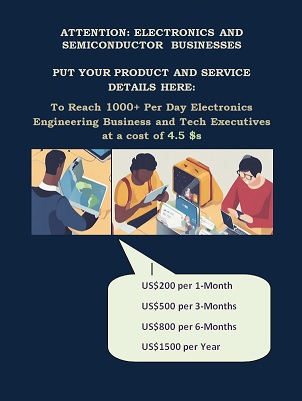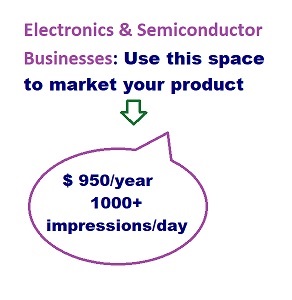In 2012 CMOS image sensor market grew by 22% and LED by 18%
Date: 13/03/2013
IC Insights has published its latest market analysis report on 7 non-IC semiconductor devices which includes, LED lamps, image sensors, MEMS sensors, RF Microwave power transistor modules. IC Insights reports optoelectronics, sensor and discrete semiconductor (O-S-D) share of total semiconductor revenues grew to 19% in 2012 versus 18% in 2011 and 14% in 2002. O-S-D’s marketshare of total semiconductor sales in 2012 was the highest it’s been since 1991.
Figure below shows that in 2012, two sales records were achieved in optoelectronics, four in sensors/actuators (including total sensor sales), and one in discretes. IC Insights forecasts ten new sales records are expected to be set in the O-S-D markets in 2013. All the products shown in Figure below are forecast to grow by moderate percentages in 2013, which will lift them again to new record-high levels. Total sales of MEMS-based products are expected in rise 9% in 2013 and reach a new annual record of $7.6 billion, surpassing the current peak of $7.1 billion set in 2011, as per IC Insights.

IC Insights finds these seven O-S-D product categories and device groups reached record-high sales in 2012 compared to 14 new records being set in 2011.
Key findings and forecasts in the 2013 O-S-D Report include:
• CMOS image sensors were the fastest growing O-S-D product category in 2012 with sales rising 22% to a new record-high $7.1 billion, blowing past the previous peak of $5.8 billion set in 2011. Since the 2009 downturn year, CMOS image sensor sales have climbed 85% due to the strong growth of embedded cameras used in smartphones and portable computers (including tablets) and the expansion of digital imaging into more systems applications. CMOS designs are now grabbing large chunks of marketshare from CCD image sensors, which are forecast to see revenues decline by a CAGR of 2.4% between 2012 and 2017. Sales of CMOS imaging devices are projected to grow by a CAGR of about 12.0% in the forecast period and account for 85% of the total image sensor market versus 15% for CCDs in 2017. This compares to a 60/40 split in 2009.
• High-brightness LED revenues climbed 20% in 2012 to nearly $9.5 billion and are expected to hit the $20.0 billion level in 2017, with annual sales growing by a CAGR of 16% in the next five years. That’s the good news, but of immediate concern is whether new solid-state lighting applications are growing fast enough to consume the large amounts of production capacity being added worldwide in LED wafer fabs—especially in China. Solid-state lighting’s main growth engine in recent years—backlighting in LCD televisions and computer screens—is slowing, and the multi-billion dollar question is whether the next wave of applications (e.g., LED light bulbs, new interior and exterior lighting systems, digital signs and billboards, automotive headlamps, long-lasting street lights, and other uses) can keep the industry ahead of a potential glut in high-brightness lamp devices.
• About 81% of the sensor/actuator market’s sales in 2012 came from semiconductor products built with MEMS technology. Sensors accounted for 52% of MEMS-based device sales in 2012, while actuators were 48% of the total. A 10% drop in actuator sales in 2012 lowered total revenues for MEMS-based devices to $7.0 billion from the current peak of $7.1 billion in 2011. By 2017, MEMS-based sensors and actuators are projected to reach $13.5 billion in sales, which will be a CAGR increase of 14.0% from 2012, and unit shipments are expected to grow by a CAGR of 17.4% in the next five years to 9.7 billion devices. MEMS manufacturing continues to move into the mainstream IC foundry segment, which will open more capacity to fabless companies and larger suppliers. TSMC, GlobalFoundries, UMC, and SMIC all have increased investments to expand their presence in MEMS production using 200mm wafers.
Among the strongest growth drivers covered in the O-S-D Report are: high-brightness LEDs for solid-state lighting applications; laser transmitters for high-speed optical networks; MEMS-based acceleration/yaw sensors for highly adaptive embedded control in cellphones, tablet computers, and consumer products; CMOS imaging devices for automobiles, machine vision, medical, and new human-recognition interfaces; and a range of power transistors for energy-saving electronics and battery management.


